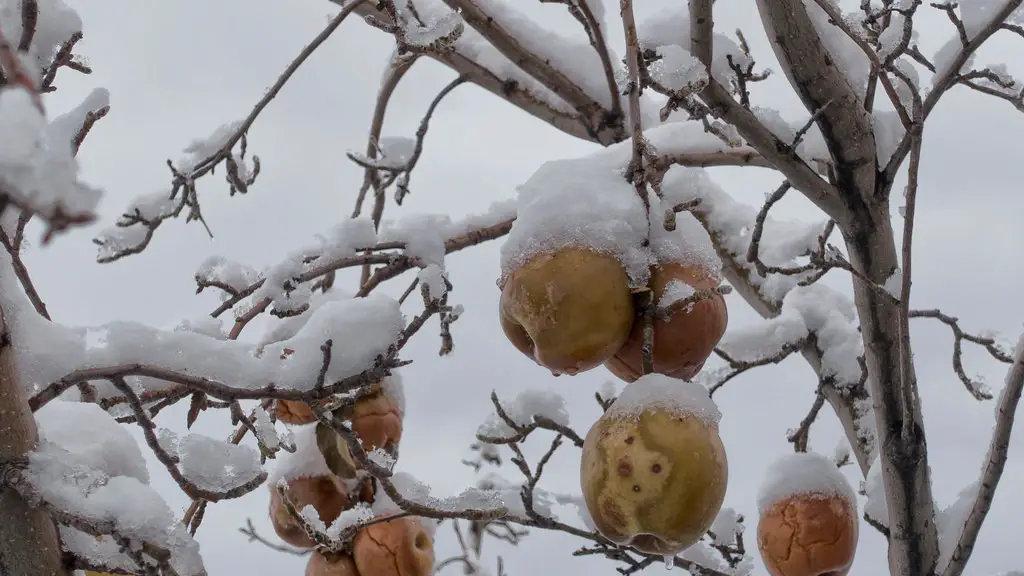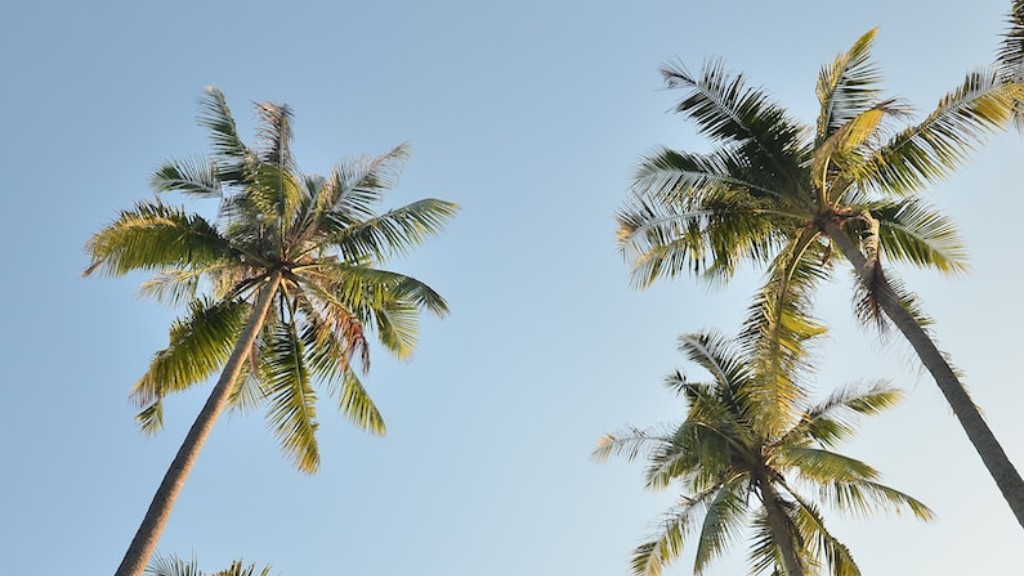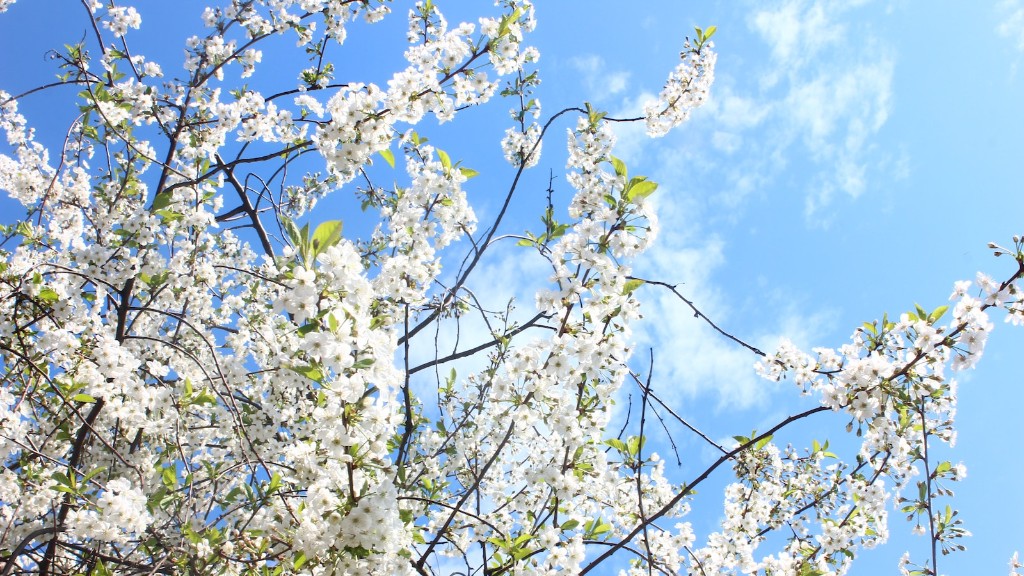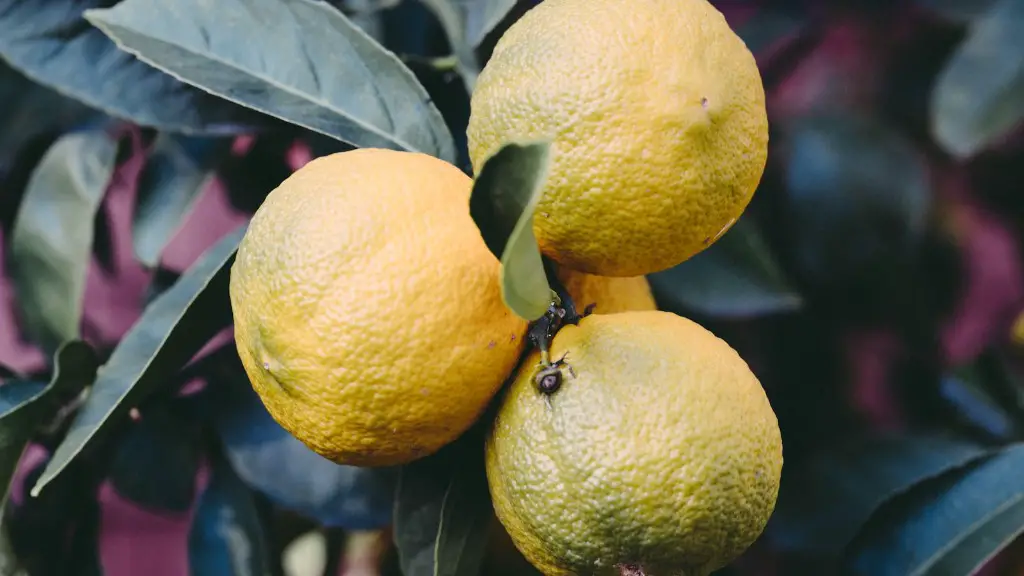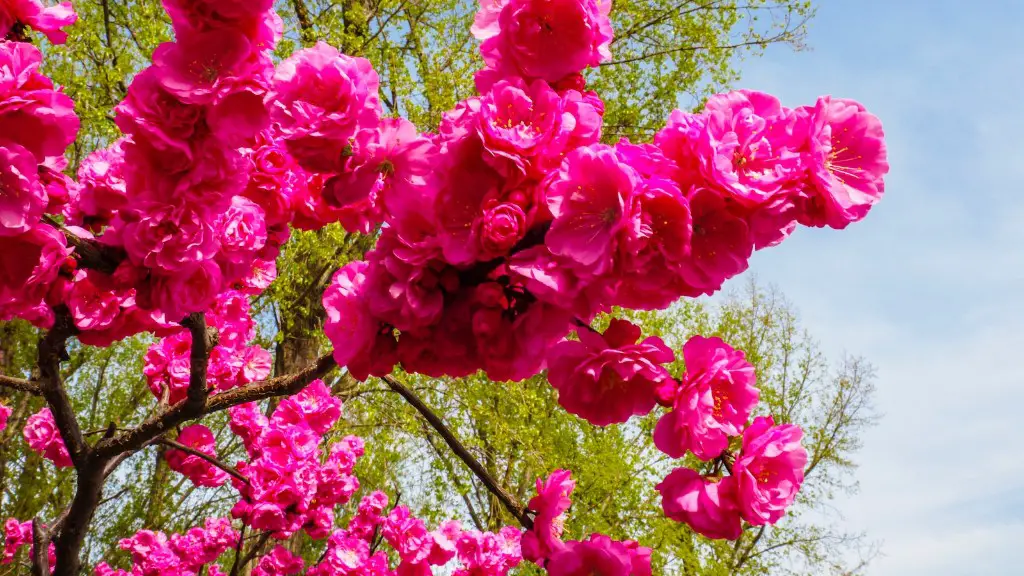Pruning a young crab apple tree is an important part of maintaining it, and it can be done easily with a few simple steps. Firstly, it’s best to prune during the dormant season, late winter or early spring before the sap has begun to flow. Doing so will ensure the tree’s health is not compromised by preventing too much sap loss.
It’s important to be aware that pruning a young tree should be done carefully. Pruning too early will leave the tree weakened and unable to cope with the elements, while pruning too late may prevent flowering buds from blooming properly. Always make sure to remove any dead or diseased branches while pruning.
To begin pruning, inspect the tree and determine which branches need to be trimmed. Identify any weak or broken branches, as well as any branches that are growing in the wrong direction. Try to make your cuts as neat as possible and at an angle, as opposed to at the base of the branch. This will ensure the cut is more efficient. If a branch has a lot of leaves on it, it’s best to use small clippers as they will be more precise.
Cutting off any unnecessary branches is also important, as too many branches will make the tree top-heavy and cause it to lean. However, don’t go overboard when pruning as this risks damaging or weakening the main trunk. It’s also important to be aware that pruning does not need to be done annually, with bi-annual pruning usually being sufficient.
It’s also important to consider the Crab Apple tree’s shape before pruning. Cutting off branches indiscriminately may leave the tree with an uneven shape. To prevent this, ensure not to remove too many branches from one area of the tree, as this will leave an unbalanced shape. To achieve an even shape, a more pragmatic approach is needed, involving removal of the right amount of branches from each area of the tree.
Finally, when pruning is finished, the tree should have a neat, rounded form. Once the desired shape is achieved, step back and admire your work!
How to Prune Established Crab Apple Tree
Pruning an established crab apple tree, as opposed to a young one, requires less intensive pruning, as the tree is already partially developed. The main goal is to keep the branches in good condition and the shape of the tree intact. As established trees don’t require as much pruning, this can usually be done every three to five years.
When pruning established trees it is essential to consider the structure of the tree first, as this will determine which branches should be removed. Begin by evaluating the tree’s overall framework and identifying what branches should stay, and what should be taken away. It’s important not to remove any healthy branches, as these will help the tree grow.
After this, look out for any weak or dead branches and carefully remove them. Ensure to make the cuts neat and as close to the trunk as possible. When this is done, look for any branches that may be blocking the development of the tree and examine whether or not they need to be removed. In some cases, small pruning jobs may be done using small sharp scissors.
Once pruning is finished, the overall shape of the tree and the strength of the framework should be maintained. To ensure the tree is healthy after pruning, trimming off any excess leaves is essential. This will help prevent the tree from becoming top-heavy and aid in the circulation of air and light, promoting healthy growth.
Finally, if required, remove any suckers that may have sprung up along the stem of the tree. Although they can help tackle soil erosion, they can impede the tree’s growth and weaken it over time. To avoid this, it’s best to cut them off as soon as they’re identified. Doing so will help promote strong, healthy growth.
How to Prune a Weakened Crab Apple Tree
When a heavily pruned or poorly maintained crab apple tree becomes weakened by disease, pruning may be used to help its recovery. However, this should only be done to the extent necessary as too much pruning may further weaken the tree. If a weakened crab apple tree is in need of structural pruning, it’s best to wait until spring when sap is flowing to ensure the tree doesn’t become too stressed.
To begin the pruning process, start by carefully assessing the structure of the tree. To avoid the tree from becoming overly stressed, try to remove only the weakest and most diseased branches. Keep the size and crown of the tree as natural looking as possible by ensuring no branches have been cut off too close to its trunk. This will also help direct energy to more vital parts of the tree.
It’s also important to take care when cutting off branches, as any improper cuts may cause bleeding or further weaken the tree. Always make sure to use shears when doing this, as they are far more precise than other pruning tools. This will help ensure your cuts are neat and also limit the amount of sap loss.
In addition, it’s best to avoid cutting off too many leaves as this could put even more stress on the tree. Instead, prune any branches off the main trunk, as this will help the tree regain its natural shape and buoyancy. Avoid removing too much foliage from the top of the tree, as this will make it top-heavy and impact its overall shape.
Finally, to help encourage its healthy growth, be sure to apply a high-quality fertilizer to the base of the weakened tree. This will help it ward off any pests or parasites and also ensure its soil remains healthy and well-nourished. Doing so can also encourage faster recovery of the tree.
How to Prune a Crowded Crab Apple Tree
If a crab apple tree has become heavily congested with too many branches, this can make it difficult for the tree to grow and can lead to a range of problems. To help, pruning should be done to thin out the crown and provide room for proper aeration and light. This should be done during the late winter or early spring, when the tree is dormant.
When thinning out a crowded crab apple tree, first identify any dead, damaged, overcrowded or weak branches that should be removed to allow the tree to effectively spread outwards. Look for any branches that are blocking the growth of other branches, and remove them as required. When making the cuts, ensure to make them close to the main trunk, as this will help direct the flow of sap.
It’s also important not to take too much foliage off at once, as this may cause the tree to become unstable. Try to thin out only a few branches at a time, to avoid any drastic changes to its shape or size. Also be aware that the tree should be pruned in a way that leaves it with a balanced shape and an even distribution of foliage.
Moreover, prune any suckers that may have grown up along the tree trunk, as they can stunt the growth of important branches and weaken the tree. When removing these, be sure to make neat cuts close to the trunk, and do not leave any long stumps of wood.
Finally, it’s essential to apply a good fertilizer after pruning. This will keep the soil healthy and help the tree regain its strength. In addition, it can also help promote general health and vigor in the tree, aiding its recovery.
How to Protect a Pruned Crab Apple Tree against Diseases
After pruning, a crab apple tree can be more susceptible to diseases due to open wounds. Therefore, it’s important to take certain precautions to ensure its health is not compromised. Firstly, it’s essential to clean the pruning shears you’ve used with a cloth soaked in rubbing alcohol before and after they have been used. Doing so will help prevent the spread of disease through the pruning tool.
Barriers can also be used to protect the pruning wound from diseases like fungus. These come in many forms, including wax, tar or powdered sugar. Wax is the most commonly used, as it can be easily applied to the wound and it won’t damage the tree. However, it must be applied correctly, as otherwise it can encourage diseases instead.
Additionally, be sure to rake any fallen fruits away from the tree, as the heat and humidity under the fruits can create a conducive environment for diseases. Also ensure to apply a suitable fertilizer with care after pruning, as excess can cause damage to the tree.
Furthermore, it is also important to be proactive when it comes to identifying possible diseases on a crab apple tree. Be aware of any discolorations, discolored leaves, wilted branches or columnar habits, as these can be indicative of a possible pest or disease. Be sure to research any issues you find and take the appropriate action.
Finally, if you’re looking to protect a crab apple tree against disease, it is important to give it the right amount of water and nutrients it needs. This will ensure its roots can absorb the necessary nutrients and water for optimal health. Knowing the soil type of the tree is also essential, as different soils are best suited to different fertilizers.
